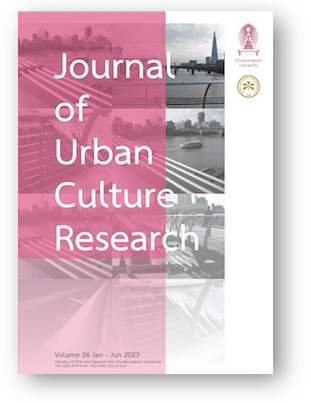Integrating Cultural Planning Approach in Urban Parks: Case of Fateh Garden, Iran
DOI:
https://doi.org/10.14456/jucr.2023.5Keywords:
Cultural Planning; Cultural Resources; Urban Parks; Fateh Garden; IranAbstract
Cultural planning has been used in some instances of urban planning and regeneration, but it is less frequently used in the planning of urban parks. The present study proposes a cultural planning model for urban parks and provides cultural planning recommendations to improve the condition of Fateh Garden as a case study. The four steps of this study are case study selection, cultural mapping, cultural assessment, and cultural planning Cultural mapping has been done using ethnography and the grounded theory method, cultural assessment has been done using interviews with the park authorities, and cultural planning has been done using creative methods. The findings show that Fateh Garden is a successful urban park with popular cultural resources. Among the components in Fateh Garden, sycamore trees, are the most important components from the users' point of view. Moreover, sports activities are the most important events and activities and the feeling of peace is one of the most important meanings and associations in this park for users. This study has provided a range of recreational opportunities available and recommendations for Fateh Garden. This study also detected some conflicts, issues and problems for users and proposed some solutions. Cultural planning of urban parks helps to identify cultural resources and use them in creative ways to improve the condition of parks. Future research should therefore concentrate on making optimal use of cultural resources of urban parks to provide a wide range of recreational opportunities for users.
Downloads
Published
How to Cite
Issue
Section
License

This work is licensed under a Creative Commons Attribution-NonCommercial-NoDerivatives 4.0 International License.
Authors authorize the JUCR to publish their materials both in print and online while retaining their full individual copyright. The copyright of JUCR volumes is retained by Chulalongkorn University.
The views and opinions expressed herein are those of the individual author(s) and do not necessarily reflect the policies or opinions of the Journal (JUCR), it editors and staff, Chulalongkorn University, or Osaka Metropolitan University.








